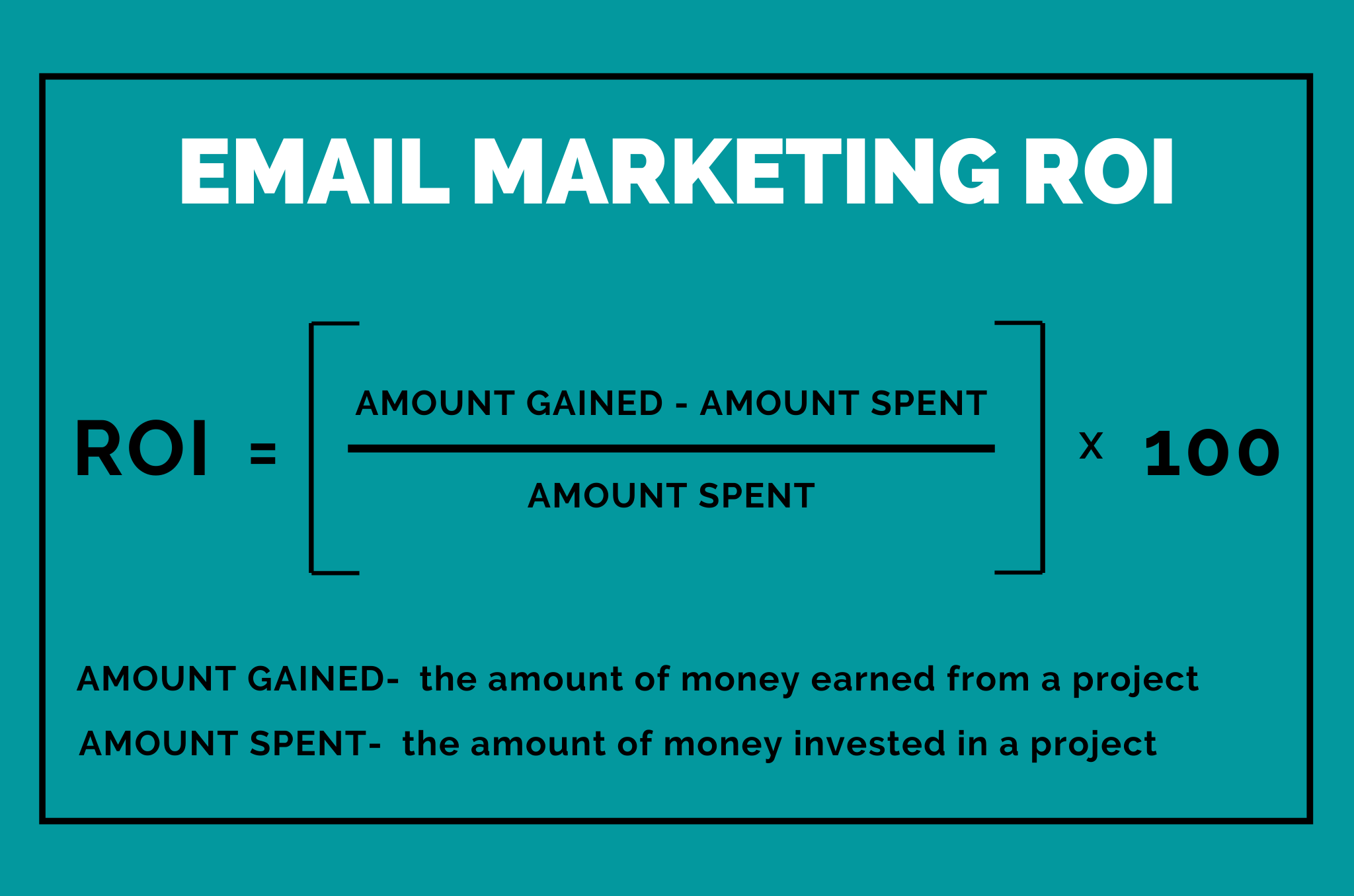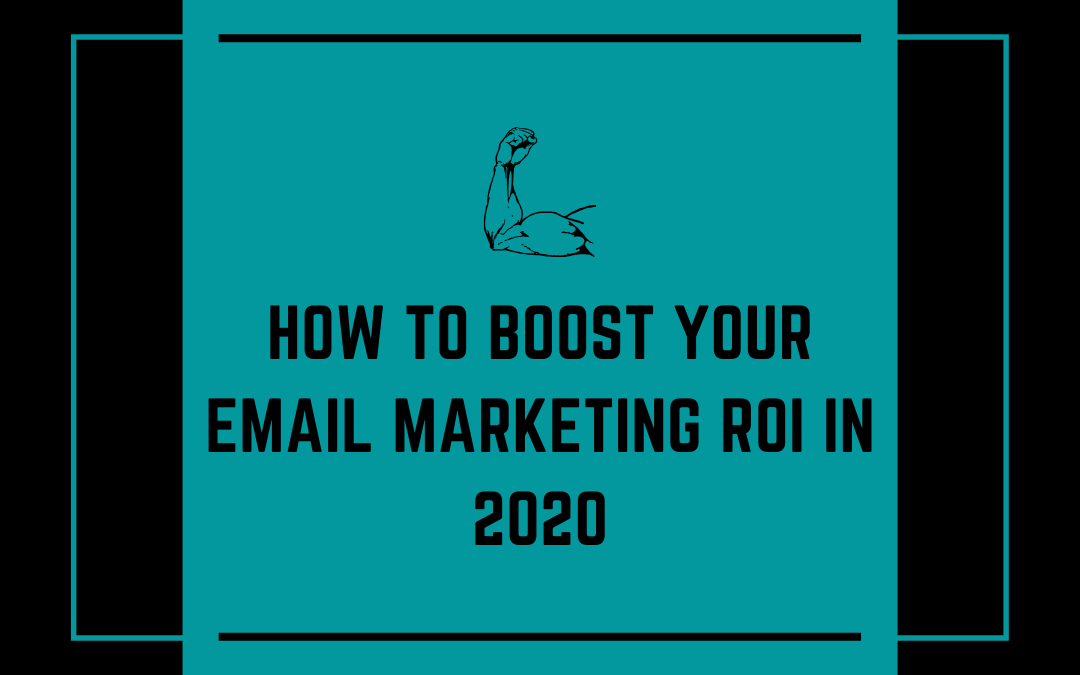You can improve your email marketing by tracking your email marketing ROI! Here are five tips to help you track and calculate your ROI.
Email marketing stands out as an effective way to reach customers, promote your business, and increase your revenue. Since it can help businesses, many of them invest tons of money into their email marketing. However, this doesn’t matter if businesses don’t get a high email return on investment (ROI). If you want to maximize your email marketing ROI, read this article.
What is Email Marketing ROI? Why Does it Matter?
Email marketing ROI is the amount of money that you gain for every dollar that you spend on your email marketing. This makes it easy for you to see if your marketing succeeded based on the profits. ROI is one of the email metrics that every business should track since it provides key information to them.
Email marketing ROI matters because it brings more money than other channels. As you can see in this image, email marketing reaches an average ROI of $42, making it something that businesses should focus on. On top of that, by looking at this average, you can see how your business performs in comparison to others when it comes to ROI.
How to Calculate Email Marketing ROI
Some people may worry that it might be difficult to calculate ROI, but it’s a lot simpler than expected.
This formula makes it extremely easy to calculate your ROI percentage. For example, if you spent $2,000 on your email marketing and you made $10,000, then you would just plug in the numbers like this:
ROI= [10,000-2,000/2,000] x 100
ROI= [8,000/2,000] x 100
ROI= 4 x 100
ROI= 400%

This means that your business made 400% more money than it spent on email marketing. However, if you would prefer to see the number of dollars you gain per dollar spent, don’t multiply the equation by 100 at the end. If we do that, then the business in the example made $4 for every $1 that is spent on marketing.
How to Use ROI Data for Email Marketing
ROI data works as a guide to help you improve your email marketing. As it increases, decreases, or stays the same, you can see how changes to your strategy affect your business. For example, if you start shortening your subject lines and your ROI increases, then you know to stick with short ones.
The opposite applies as well. If you make your emails longer and your ROI decreases, then you shouldn’t write long emails. Even if your ROI stays the same after a change, you still learn something: that change didn’t impact your ROI. That means that you can use the easier method for your email marketing to save time and money.
5 Tips to Maximize Email Marketing ROI
Knowing about ROI won’t help you if you keep your email marketing the same. You need to take the data that you collect, see what changes affect your ROI, and adjust your marketing strategy to improve it. You can use these five tips to give you some ideas and improve your ROI.
1. Improve Email Deliverability
First, if you want to increase your ROI, you need to improve your email deliverability. Email deliverability refers to the number of emails that reach your recipients. There are different metrics that can affect your email deliverability.
Spam rate: the percentage of email domains or users that mark your emails as spam
Bounce rate: the percentage of emails that never reach your customers’ inboxes
Unsubscribe rate: the percentage of people that unsubscribe from your email campaigns
If any of these metrics increase, then you should make changes to lower them. For example, if your spam rate increases, you’re probably sending too many emails. Bounce rates mean that you need to double-check your email list, and unsubscribe rates mean that you should look into your content and offers. See what you can change to get more emails to more people.
If you use a CRM or sales software, they sometimes have email deliverability reports. Blitz Sales Software’s email deliverability reports enable you to track email deliverability and email engagements such as how often recipients open your emails and whether readers click any included links.
2. Use Effective Subject Lines
Second, email users see the subject line first when they look through their emails. Your subject lines can determine if your subscribers will open your emails or send them to the trash folder.
Your subject line matters when it comes to email marketing: nearly 7-out-of-10 users use the subject line to decide if an email is spam. On top of this, 35% of people open emails based on the subject line. This means that you need to optimize and improve your subject lines if you want to increase your ROI.
Try different approaches and see how they affect your open rates. Make sure that your subject line tells customers exactly what’s in the email and that you address it near the beginning. If you don’t, then it may upset customers since they may view it as a lie. Look for other tricks like this to boost your open rate.
Could your business use more sales revenue? Blitz can help to nurture relationships and win more customers with our easy and effective sales follow up software! Schedule a free demo with us!
3. Create the Right CTAs
Then, your emails should always put a call-to-action (CTA) so that subscribers can support you. A CTA asks your subscribers to either make a purchase, look at details, or follow your social media accounts. Simple CTAs will help you boost your ROI since it allows your business to interact more often with customers.
Good CTAs make things clear and easy. For example, if you want people to look at your weekend deals, mention it in your email and include a link or button that takes them to your website. This makes your request straightforward while making it easy for your readers.
4. Personalize and Segment
On top of this, you can make your emails more relatable to your customers through personalization and segmentation Personalizing emails means that you add little details to show a customer that your business cares about them.
Simply adding people’s names at the start of emails can add that extra personalization to make subscribers more receptive to your business. Segmenting your emails can take this a step further.
Segmenting your emails means that you only send emails to people based on their demographics, purchase history, and other information. You can send people emails that apply to them, which increases the odds of them opening those emails. Try to personalize and segment your emails.
5. Optimize for Mobile Devices
Finally, your business needs to optimize your emails for mobile devices. Doing so will allow you to increase your ROI as you meet the needs of your customers. If you think that people don’t use their phones to check their emails, then you should look at this statistic.
People open almost half of their emails from email marketers by using their mobile devices. This means that you need to optimize your emails so that they display correctly on computers and phones. Look into different templates that will display correctly for both.
This will encourage your mobile users to open your emails and interact with your business. As you increase interaction, you increase the odds of phone users buying from your business and boosting your ROI.
Increase the effectiveness of your sales and marketing efforts at your company with our easy-to-use follow up software! Blitz is reasonably priced, and is packed with the tools your agency needs! Contact us to learn more!
Conclusion
Businesses use email as an effective online channel to interact with their customers. If your business learns to use emails effectively, then you can increase your ROI. Review the five points in this article to help you create a stronger email marketing strategy. As you do so, you will gain subscribers, increase your metrics, and maximize your ROI.

Laura Narušytė
Guest Author
Laura Narušytė is an experienced digital marketing and SEO specialist at Omnisend – Ecommerce Marketing Automation platform. When not blogging, she likes to read about SEO, digital marketing and e-commerce trends, technology, and personal productivity. Follow on Linkedin.



